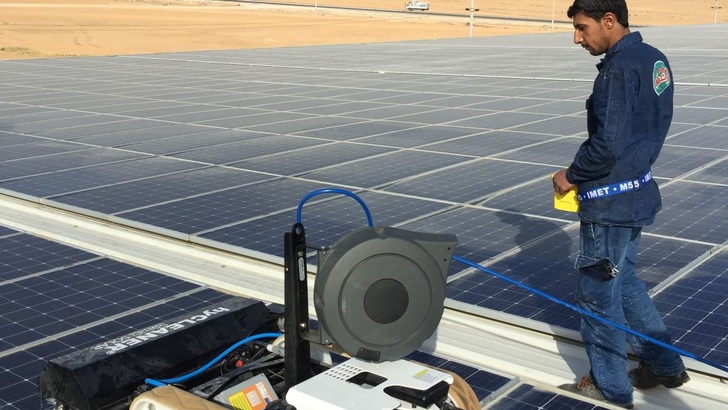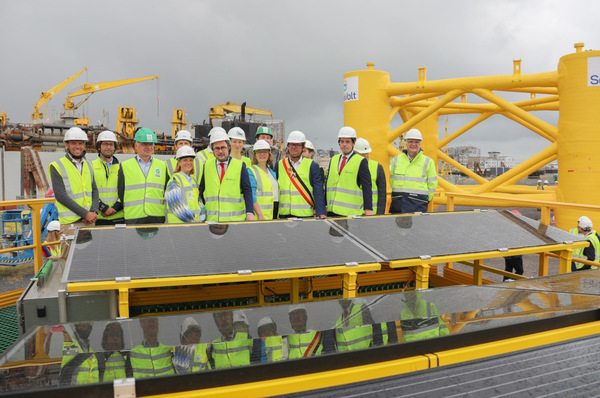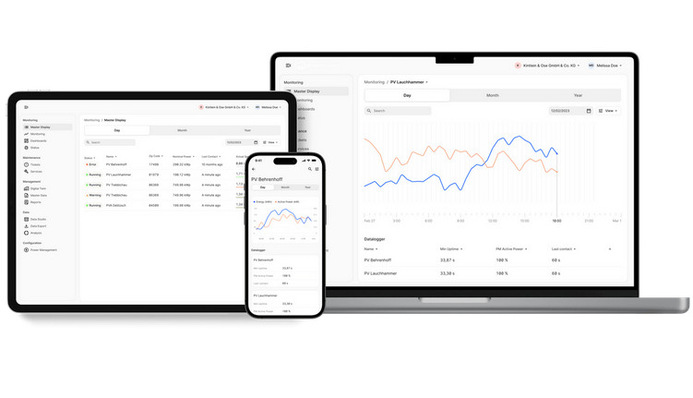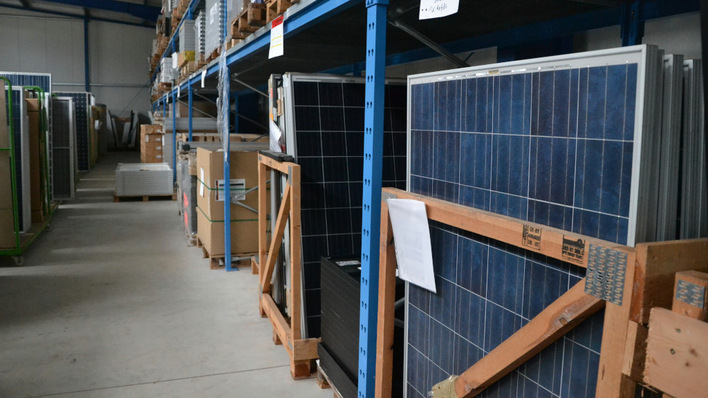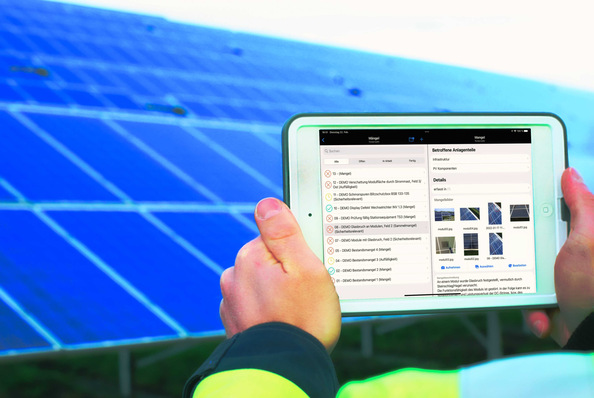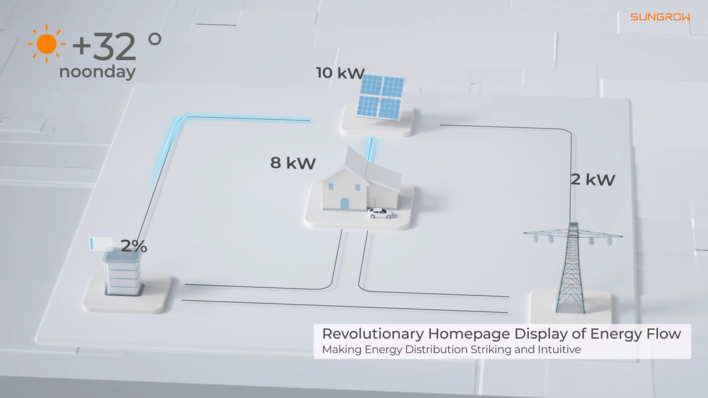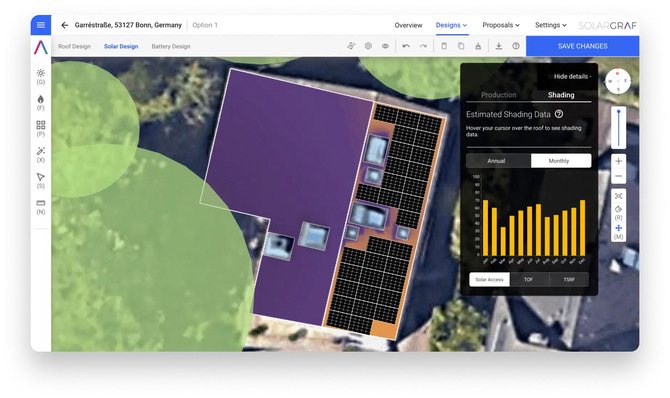The Giant Industrial Group are based in Al Mafraq, about an hour’s drive from Amman, capital of Jordan. The company produces washing and cleaning agents for industrial and domestic applications. Founded in 1991, they have steadily grown and expanded their production facilities and warehouses over the years.
Today the company with 240 employees are producing a yearly output of 60 million kilograms of washing and cleaning agents on a surface area of 95,000 square metres. They now export their products to 24 countries.
17,150 square metres of solar panels
In February 2017, the company installed and put into operation a solar array of 17,150 square metres. It is distributed among the production and warehouse buildings as well as a covered carpark. The installation is made up of 7,694 solar panels by the Jordanian manufacturer Philadelphia Solar. At an output of about three megawatts it is the country’s largest rooftop installation.
It allows the Giant Industrial Group to self-generate about 70 percent of their own electricity demand. In addition to any environmental considerations, the solar power helps to lower the production costs – an economic benefit.
In order to generate the highest possible solar yields, the Giant Industrial Group were considering the issue of how to clean the panels easily and efficiently as far back as the design stage. In this part of the world, that can be a sandy problem. After all, in the sunny desert countries of the Middle East, dirt on solar panels is one of the major issues.
Panels covered in sand and dust
It usually does not take long for sand and dust to cover the only shallowly inclined panels. And in the case of the Giant Industrial Group, a nearby cement works is an additional source of dirt. Without regular cleaning, the efficiency can be reduced by as much as a third – and even much more after a sand storm.
In their search for a suitable cleaning solution, the company came across the semi-automated cleaning system Hycleaner Black Solar, produced by Gronau-based TG Hylift GmbH. At the Intersolar in May 2017, Mohammad Smadi, Director for Research and Development for the Jordan-based business group was able to get a first impression of the cleaning machine. He sealed the deal and just a short time later was able to start using the system in Jordan.
Massive requirements of the equipment
The requirements of the machine are massive, since the operating conditions are extreme. The surface temperature of the solar panels can easily rise to 80 degrees Celsius during the day. That is why cleaning happens during the early morning or from after 5pm late into the night, while the outside temperature is more tolerable for both the workers and the equipment.
In order to ensure stable yields, the Hycleaner Black Solar is in operation daily, or nightly, busily cleaning one part of the solar array after the other.
Via a radio link, the staff direct the machine across the solar panels with millimetre accuracy – and without physical effort. The Hycleaner can easily bridge maintenance corridors of up to 30 centimetres, which makes handling it much simpler.
It used to take four or five people per day, or night, to clean the solar array. Thanks to the semi-automated equipment, it now only takes one or two.
Water is particularly precious
In the countries of the Middle East, water is a more than valuable asset. Of course, the Giant Industrial Group is conscious of this, too. The water consumption of the Hycleaner is about one litre per square metre and can be adjusted according to the amount of dirt.
As an experiment, the system was used on the solar panels without any water at all. The dry brushes swept the loose layers of dust and sand off the surface. Mohammed Smadi and his team were delighted, since even a dry sweep helped to significantly increase the solar yields.
Cleaning with and without water
At the same time, it was much harder for new dust or sand to stick to the cleaned surfaces: The accumulation of new dirt was much less. To further save resources, they changed the cleaning schedule: One clean with water was followed by one without. To Mohammed Smadi, this is the perfect way of combining ecology and economy.
To properly secure the Hycleaner Black Solar on the dry solar panels, Hylift provided special treads made of neoprene that provide perfect grip and durability. For using in the wet, the standard traction treads continue to be sufficient. Changing from the neoprene to the regular treads is easy and thanks to Velcro fastenings only takes a few moments.
The author is Anja Uhling from the Hycleaner team at TG Hylift GmbH. She is the contact person for international sales partners and customers, focussing on English- and French-speaking countries.
Keep up with innovation in PV! Watch our PV Guided Tours at The Smarter E Europe in Munich:
https://www.pveurope.eu/Videos/pv-Guided-Tours-videos-2018
Stay informed, get our newsletter twice a week.
Register here
Read more about solar modules.
Read more about solar mounting systems.
Read more about solar energy storage.

